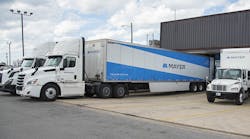In the first part of our series, we reviewed why understanding cost will be important in the future of wholesale distribution. We are entering a phase of slow growth where cost of service will be of strategic importance for all distributors. Unlike the growth period in the first decade of the millennium, the next decade promises to bring slower growth, limited commodity inflation and relentless pressure on costs. Wholesale distribution can be classified as an aggressive step-cost business structure and traditional accounting practices, including P.A.R. reports, don't provide sufficient information to streamline costs and provide sufficient operating profit. Past disciplines such as activity-based costing have recognized this issue and have used activities to allocate operating costs. Activity-based costing, however, has proven to have significant flaws including complexity, expense and highly variable assumptions including appropriate activities and their capacities.
From this background, four years ago we began an intensive review in search of a better logic for allocating expenses in wholesale distribution operations to gain insight into maximizing operating profit. Activities had been tried, and the search was for a better allocation methodology that fit wholesale distribution and offered a tangible logic where action could be taken.
Our search settled on transaction types as the best way to allocate costs for several key reasons including:
-
Transactions are the building block of wholesale distributors' value-added. In essence, wholesalers aggregate products from different manufacturers and bundle them into transactions that have a tangible economic value.
-
There are different transaction types with different cost structures. They include, but are not limited to, stock (original orders), stock transfers, non-stock, drop or direct shipments, counter sales and back orders.
-
Transactions are actionable. They can be targeted for profitability initiatives including process streamlining, pricing and transaction shifting.
With this in mind, we worked several years to develop a suitable costing logic that accurately captured transaction types and their unique costs.
The Transaction Cost Template
After numerous projects involving transaction-based costing, we have developed the logic displayed in the Differential Cost chart on this page. The methodology comes from reviewing the transactions and their costs for distributors across multiple industries. The exercise is known as “differential costing.” In the far left column is the transaction type, and the top row is filled with operations including purchasing, paying vendors, receiving, put away, order writing, outside sales, shipping, invoicing, credit/collections and warranty returns. These are the major operations of the wholesale firm and they are used to capture ledger costs and develop transaction costs for individual transactions. Populating the matrix involves using the stock original order transaction as the basis of the cost allocations. The stock original order is the most prevalent in any distribution business and all functions receive a value of 1x. From there, functions are reviewed using process mapping, cost estimating and time and motion studies. The values above are an average of differential costing exercises over the past several years. To understand how the matrix works, look at the operation of Warranty/Returns. Under the operation, the stock (original order) gets a value of x while, several rows down, the non-stock transaction gets a value of 4x. This means that the warranty/return process of non-stock orders is four times as costly as the same operation for a stock order. Why? The non-stock order often involves returning the product to an unfamiliar vendor, the rate of returns are higher as product applications are less familiar and warranty rules and procedures are often unknown and therefore costly. The differential costing exercise sets the stage for some exciting and challenging findings for distributors. We cover these in the next section.
Transaction Mix & its Effect on Profits
After several years of determining and using differential costs of transactions, the averages for all transactions are listed in the other chart on this page. In the exhibit, the transaction type is listed in the far left column followed by its sales as a percentage of total sales and transaction profits as a percentage of all transaction profits. (Note: transaction profits are gross margins less transaction costs. Transaction costs are step-costs as applied to transactions, and average 75 percent of operating expenses.) Stock original orders and directs account for the majority of the transaction profits for the distributor. Other transactions, in aggregate, detract from operating profit. For instance, non-stock transactions average 15 percent of sales but cost the firm 25 percent of the transaction profits of the firm.
It's important to note that not all non-stock, will call, and backorders are negative profit producers. Some of these transactions produce positive profits but, when aggregated, they are typically negative profit producers. Hence, at the transaction level, these are opportunities for profit improvement.
The problems and opportunities with the various transaction types are listed below:
Will Call
These transactions are simply too small in size to produce a positive profit. For instance, if it costs $25 to process a will-call transaction, any transaction producing less than this in margin dollars yields a negative profit. The implications for wholesalers are to raise prices on will-call sales and enforce minimum order quantities.
Non-Stock
These transactions are expensive to handle. The use of specialized vendors, specialized products and their varying policies and procedures is costly. We also find that many wholesalers have no minimums for non-stock transactions and inbound freight is often not captured and passed on to the customer. Also, non-stock transactions are price sensitive to revenue size of the transaction. In essence, smaller non-stock transactions should receive higher prices than most comparably sized other transaction types.
Backorders
These transactions are often small and costly to deliver relative to their size. Most wholesalers would be well advised to not honor backorders except in special instances. Backorders should, where possible, be lumped with other stock deliveries to make their shipping cost lower.
The preceding suggestions are generalized and we suggest each firm conduct proprietary differential costing exercises to understand the transaction profits and issues unique to their business.
In the next installment, we'll review the Theory of Transaction Profitability and how to use it to increase the operating profit of the firm. Until then, consider conducting a differential costing exercise and using the information to improve your company's operating profits.
Scott Benfield is a consultant for distributors and manufacturers in the areas of growth strategy, channel decisions, marketing, sales and operations. He can be reached at (630) 428-9311 or [email protected]. His company, Benfield Consulting, is located in Chicago and the site is www.benfieldconsulting.com.








